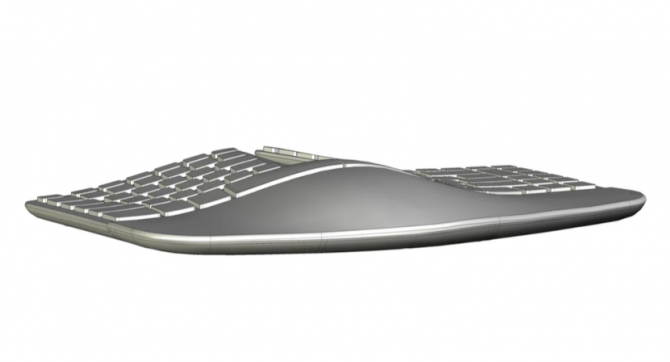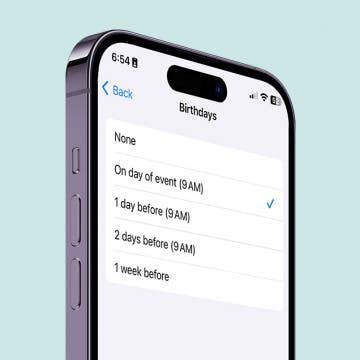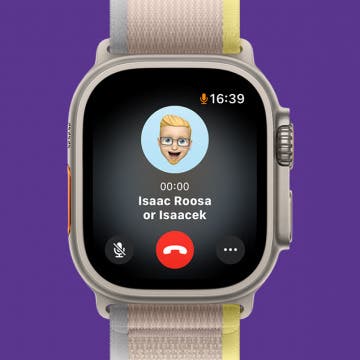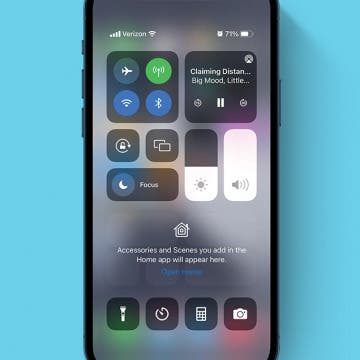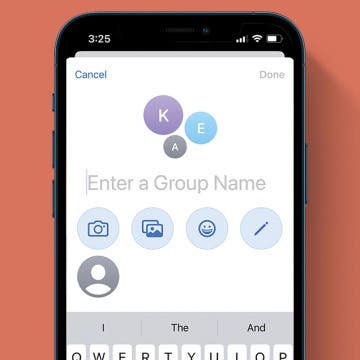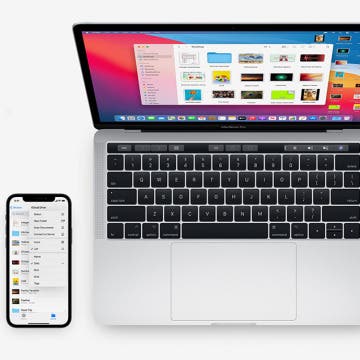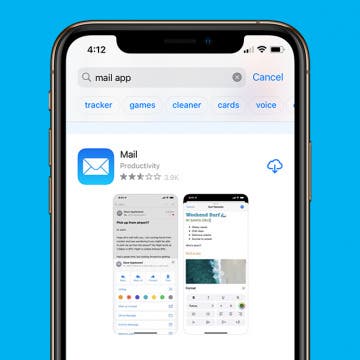(Note that a cleaned up and extended, easy-to-digest version of this article – without the lengthy section on the chart – will be published in the iPhone / iPad Buyer's Guide. Go buy it ;-) ).
The iPad offers an excellent way of reading PDF files. While you can do this right in Safari (with web based PDF's) or can freely download Apple's own iBooks, it may be still worth checking out how almost all (!) the currently available PDF reader solutions. Knowing what the alternative PDF readers are capable of is essential as reading online PDF's with Safari lacks any kind of features like in-document searching. In addition, iBooks lacks some essential features too.
For this roundup, I've thoroughly tested 36 (!) PDF readers for the iPad (and iPhone) and selected five most recommended titles. These are as follows (note that I don't provide an overview of the other, not the most recommended titles – you can find all the information in the comparison and feature chart):
iBooks by Apple
Being the official e-book reader by Apple, this is the most widely known PDF reader also capable of reading Apple's other ebook format and access the online store.
The application is pretty nice; however, it certainly lacks some, for many users, essential features like in-document searching, text copying to the clipboard, annotations / highlighting, page cropping to avoid having to zoom in and position every single page manually to make use of the unused screen estate, no double-page landscape view, not even support for table of contents.
iAnnotate PDF by Aji Ltd and iRead PDF by Aji Ltd
These two applications are among the best PDF readers particularly because of their searching capabilities and, with iAnnotate PDF, particularly the annotation support, in which it's still unmatched. In addition, iRead PDF is free, unlike the other recommended titles (except for iBooks, of course).
These two ebook readers can make use of a desktop component called Aji Reader Service, which helps in the initial analyzing of the books you'd like to transfer to your iPad. You don't need to use it unless you plan to read PDF files exceeding 500-600 pages, where the conversion done on the iPad often fails. Then, you just download the desktop converter on your PC / Mac, and point it to the directory of the files (with the + button) containing your PDF files to transfer to your iPad:
On your iPad, go to the “Download” menu (second icon – a down arrow – from the left on the top), select “Aji PDF Service”. You'll be shown the list of the computers running the desktop service:
(as with most screenshots in this roundup, click the image for the much larger and cleaner original!)
Just tap the down arrow on the right of the line; the automatic download and metadata (for searching, annotation etc.) extraction and transfer will start:
This will be way faster than doing the latter on the iPad itself – not to mention it'll succeed in extracting the book metadata with books larger than 500-600 pages, unlike with the case of doing the same on the iPad.
There are some other PDF readers that also have desktop components; most notably, BookShelf. That application, however, is vastly inferior to almost all other titles (mostly because of the text-only way it renders books) and is, therefore, not discussed here in any length. (Of course, the comparison and feature chart has all the necessary info on it.)
GoodReader by Yuri Selukoff
One of the most versatile book readers on the iPad (and iPhone) with great support (new versions with new features are released continuously) and very low price ($1 for both the iPad and the iPhone). The 3.0 version, as promised by the developer, will even have PDF annotation capabilities. A highly recommended title having a lot of unique features like displaying double pages in landscape mode with both settable shifting and cropping.
ReaddleDocs by Igor Zhadanov
ReaddleDocs is also a very powerful PDF reader for both the iPad and the iPhone. For a mere $5, it also supports PDF annotation and a plethora of other features.
Note that these five e-book readers are my (a power user needing a versatile, powerful reader) picks. Some people may prefer a much simpler and, conversely, easier-to-use reader like SimplyPDF.
A more thorough examination
As with most of my roundups, most of the information is contained in the comparison and feature chart. Please click the link. If you find the chart to be too wide, feel free to clear some of the checkboxes at the top. (Clearing a checkbox hides a given product's column. For example, if you clear all the checkboxes except that of the most recommended five applications, only their column will remain visible as can also be seen in the following screenshot:
I provide you with a detailed explanation of all the chart rows below. As usual, it's here that you are presented with a detailed, feature-by-feature comparison of all titles. (Not only the most recommended five.) Also, I provide you with a lot of tips like how a given feature can be accessed. (Actual menu item / icon.)
Universal? If not, price of iPhone version (if exists): while in the pre-iPhone 4 days, it was pretty meaningless to even try to read PDF files on the (comparatively) low-resolution display of the (then-current) iPhone models, some apps are either universal (meaning both iPad and iPhone compatibility) or have a separate iPhone version.
Most of the apps already support the Retina screen of the iPhone 4, meaning high-resolution image. Should you only have an older-generation iPhone (or iPod Touch) with a lower-resolution screen, you may want to look at iPhone PDF readers that have text reflowing capabilities. The reason for this is most PDF books can not be read in Portrait mode and only with restrictions in Landscape.
You can see this in action in the following screenshots, showing the Apple Xcode book. The first screenshot shows how the low-resolution screen renders the document in Portrait orientation; the second shows the same in Landscape and, finally, the third shows the text-only mode with the excellent generic file handler and document reader GoodReader.
(Portrait)
(Landscape)
(Text Only)
As you can see, if you need to read a lot of text, you may stick with the text-only mode by default, only switching back to the full graphical mode to see text formatting (italic, bold); links (which is not supported by the purely textual mode either) and, of course, images.
Of course, on the much higher-resolution and larger-screen iPad, it's entirely meaningless to use text-only mode.
Last updated: Here, I listed the last update date. The more frequent refreshes, the better as it shows more support and bugfixes / new features from the developer.
Rating: I also elaborate on the (current, as of 18/Aug) rating of the app – both of the current and all past versions. Note that even the best PDF readers (e.g., ReaddleDocs, iAnnotate or iRead) can have pretty low grades, which means some users may not have realized the potential of these apps. Some developers, in addition, may cheat by “bumping up” the grades with for this reason created AppStore accounts; a very good example is the very low-quality PDF Reader for iPad by Eduard Clapkis, which gathered a four in both cases.
All in all, these figures are for information only and shouldn't be depended on.
The Search group is one of the most important one, particularly is you, like me, use the iPad as a repository of technical e-books, you'll want a PDF reader that supports searching.
There are several important points to pay attention to when selecting a search-capable PDF reader. Unfortunately, currently, none of them support them all; this means readers search either slowly and in one book only (all the most recommended readers, except for the two Aji Ltd products) or without being able to search for more than one word (Aji Ltd products).
In this group, the first two rows, Next and Previous, explains whether it's possible to easily move to the previous / next hit. In some cases, this is preferable; in other cases (for example, when you specifically look for the first occurrence of a definition in a book), the list-based approach, where all the hits are presented in a way like the following screenshot (made of Apple's own iBooks):
The two Aji Ltd products use the previous/next approach, as can also be seen in the following screenshot:
As you can see, you're only presented a backward / forward button and the number of hits.
The next row, General search speed, elaborates on the searching speed of the search-capable apps. Generally, there are two approaches: the two readers by Aji Ltd instantly search through even hundreds of pages. Other readers don't – and, unfortunately, they don't cache the PDF parse results, which means subsequent searches will be as slow as the first one even if you don't leave the app / book in the meantime.
It's the last test, Able to find separated words?, where the two Aji Ltd apps severely lack – they are unable to find anything with a space in it. For example, if, in the above screenshots, you enter “tour of xcode”, it won't find anything – as opposed to iBooks (and all other search-capable readers). Two example screenshots showing this:
(iBooks)
(Aji's apps)
Note that I haven't dedicated a separate row to searching in several PDF files at the same time as it's only supported by the two Aji Ltd apps. An example of searching for “iPad” in the current Apple development documentations also available in PDF using iRead PDF:
The next group elaborates on automatic / configurable page cropping, as opposed to manually zoom in and position every single page in order to make maximal use of the available screen estate. If the latter is at all possible – for example, in two-page Landscape view modes, it's generally not the case. There, configurable page cropping (when available) is a god-send.
Let me show you some real screenshots showing you what you can achieve with page cropping and when it can be a real life-saver. I present you win two-page examples; the reason for this is that it's by using cropping that you can zoom into pages in an intelligent way, by minimizing the “dead” screen estate between the two pages.
First, let's see the non-intelligent (no-copping) zoomed-in case with GoodReader, which is currently the best reader when it comes to using cropping in two-page Landscape view. The pages shown here are the 10th-11th pages of the Xcode introduction guide by Apple.
By the way, should be there no cropping features in GoodReader, the (currently) only PDF reader supporting a (somewhat) intelligent two-page zoom by minimizing the white area in the center of the screen, Easy PDF Viewer, produces the following output in the most optimized (manual) setting:
Using this custom cropping for both even and odd pages:
The landscape two-page view becomes as follows:
However, if we choose not to include the starting some letters of subtitles, page numbers, headers, footers etc., of which I've included all but the uppermost two rows (here, Chapter 1 – Xcode Features Overview), that is, using this kind of crop:
Then, the double-page view will be the following:
As you can see, by doing some initial page crop setting, you can make use of the two-page viewing mode clearly better (with larger character size) than even with Easy PDF Viewer and much-much better than any other PDF readers supporting double-page display in Landscape orientation.
Note that you can always look up the information missing from screens like this with two taps (and another one to return to document reading mode) by simply re-returning the crop setting mode (the sixth icon on the toolbar).
The Odd and even pages differently row explains whether, if there's some kind of a cropping feature, you can define separate cropping areas for odd and even pages. Several e-books (just like real-world ones) use a different layout in on odd and even pages; this is why this setting can be really useful, particularly in cases when you can't zoom into individual pages. GoodReader excels at this area too – with it, if you deactivate the, by default, enabled “The same crops for odd and even pages” in the upper left corner, you will be able to set the odd/even crop separately.
The next row, Remembers separate settings for different books?, shows whether the given reader remembers the cropping settings when you change books and, then, return to a previous one. Doing so is of great help – you don't end up having to re-set the cropping each time you change a book.
The next major group, Scrolling, elaborates on everything related to quickly srcolling around in the document; the ability to “lock” the horizontal position when scrolling by dragging, the way of scrolling (dragging the page as done in Safari vs. using so-called “tap fields” to quickly turn a page with a simple tap on a designated screen area) etc.
The first row, Quick scroll, elaborates on how quickly you can jump to an arbitrary page in a document. PDF readers that have a draggable scrollbar (or a list of small page thumbnails, as is done by Apple's iBook) are very easy to scroll. PDF readers that don't are, generally, very hard to navigate, should you just want to skip, say, 100 pages. Typically ones that entirely rely on tap zones and not having any kind of quick scroll or page number entering capabilities; for example, TagDisk HD + 1.0.0 by Weng Chen-chinPDF Reader for iPad 1.1 by Eduard Clapkis etc.
Direct page number entering: Should you know the exact number of the page you'd like to jump to, with a PDF reader with page number entering capabilities, this is pretty easy to do.
Note that none of the PDF readers (currently) support extended page numbers, unlike on the desktop. (See e.g. introductory pages using the Romanic numeric format; Appendix pages in the form of A-1, B-1 etc.) As, programmatically, this is comparatively easy to implement, hope, sooner or later, at least the best titles (GoodReader etc.) receive support for it.
The Scrolling must be done by... row explains how pages can be turned. The following are the most widely used page advancement technologies:
- just dragging pages up and down, as you'd do in Safari. This requires the most hand movement. However, it also has the advantage that you can freely position the rows you're currently reading just, say, under the top edge of the screen so that you will easily find them again, should your attention be distracted for a moment. (And to also give you a feeling of quickly advancing through the book.)
- tap zones require almost no hand movement (unlike scrolling a PDF file like a Web page). Then, designated areas are provided for switching to the next and, in most cases, previous pages. An example of these:
The tap zones in Simply PDF, a really barebones, but pretty popular PDF reader, also showing its GUI. It has, as you can see, four tap zones. By the way, I'll also return to the way of Simply PDF's handling scrolling down/up the current page when zoomed in; for example, in Landscape mode when not the entire page is displayed, only a part of it, so that the text makes use of the entire screen estate.
Lockable vertical / horizontal position when scrolling horizontally / vertically with gestures (as opposed to taps): in several PDF viewers where you need to scroll by dragging instead of simply tapping designated tap zones, it may be important to be able to lock the horizontal position. A well-known example that, by default, doesn't employ any horizontal locking is PDFReader 2.1 by YUYAO. With it, you must explicitly disable horizontal scrolling explicitly to avoid drifting to the left/right inadvertently when scrolling.
Quite a few titles, while they don't have any explicit way of disabling horizontal drifting, have implemented it my default. This is one of the best approaches to the problem as some apps (most notably, PDFReader 2.1 by YUYAO and the very similar PDF Reader 1.2 by Kdan Mobile Software LTD) don't have a “sticking” setting. That is, when you restart the app, you will always need to re-enable horizontal locking.
Possible to scroll zoomed in in the same page by taps (to avoid vertical / horizontal mismatch?):
Here, I've elaborated on whether it's possible by simple taps to scroll up/down a screenful of information, just like on the desktop browsers, where, generally, if you zoom into a PDF page, you can see the next block of content just under the previously displayed one by either pressing Space or clicking anywhere in the down direction of the scrollbar.
The previous Simply PDF screenshot (and the accompanying text) shows an excellent implementation, which works in exactly the same way as Adobe Reader on the desktop (be it either Mac OS X or Windows).
The next sections elaborate on the apps' ability to receive / send PDF files. This is pretty much essential on the “sandboxed” iOS, where you can't just go to the home directory of an application with a generic file explorer tool (like Finder on Mac OS X or Explorer / Total Commander on Windows) and just copy the PDF file it operates on on another PDF reader's home directory so that
First, the Sending group explains how you can send a PDF file that is (only) available in the current application. There are two ways of doing this: emailing it (see the Send by mail? row) and passing it to another, (hopefully) PDF-capable application (Open in source?). With the first one, you can send the file to any e-mail recipients and even another PDF app that does register itself as a PDF-capable reader, should you receive the mail on your iPad and select the PDF reader you'd like to pass the PDF file to, as can also be seen in the following screenshot:
This should be one (albeit pretty awkward) way of inter-PDF reader communication. Fortunately, with the most recommended titles, you won't ever need to use this to circumvent the lack of direct file transfer. The only exception is iBooks, which lacks any kind of file sending / transfer capabilities. That is, if, in iTunes, you synchronize some PDF files to your iBooks, you won't be able to send them to other readers, should you want to use their unique capabilities missing from iBooks (e.g., double-page view in Landscape with advanced cropping (GoodReader), ability to search in more than one books (Aji's apps) etc.) You'll need to re-download or re-synchronize them.
The next several rows elaborate on the readers' ability to receive (as opposed to receiving) files from other programs, let be them either desktop ones (on your Mac / PC / Linux box) or file transfer-capable other PDF readers on the same iPad (including Mail).
Registers itself as PDF reader for Open in? (Note: 10 entries will be displayed at most!): Most PDF readers are able to register themselves in the system as PDF readers. This means they will be listed in the type-dependent Open In list. The next screenshot shows an example list in Mail, also demonstrating how you can invoke a registered PDF reader on it, should you want to use something else than the default (that is, last-installed) one. You can do this by tap-and-holding the PDF file icon in the mail body and select “Open In” in the menu. (If you just tap the file icon, then, the default PDF reader will be invoked; in the example screenshot, it's “Simply PDF”.)
Note that, because of a system restriction, 10 applications will be displayed at most in the list. That is, don't install more than 10 PDF (capable) viewers / readers / file handlers if you want to invoke them all. If you do hit the limit and would still like to invoke any of the PDF reader apps not any more displayed, just uninstall any / some of the more recently installed readers. This will also remove it/them from the Open in list, bringing in the, because of the restriction, previously missing titles.
iTunes File Sharing support: Upon synchronizing with your desktop computer, before iOS4 (and the iPad with iOS 3.2), there wasn't an easy and, more importantly, standardized way of transferring PDF files to your iOS device. (These “legacy” ways are discussed later.) With the introduction of OS 3.2 running on the iPad (and iOS4 running on iPhones / iPod Touches), this problem is no longer topical. If a given PDF reader supports File Sharing (all of the most recommended ones do, except for iBooks, which will be discussed later), all you need to do is going to the “Apps” tab in iTunes and, after selecting the given PDF reader in the bottom left list in the File Sharing section, just drag-and-drop the PDF files you'd like to make available to your reader. An example screenshot showing doing this with iRead PDF:
Note that you can also delete files here – just select the title(s) to be deleted and press the Delete key on the keyboard.
Built-in Wi-Fi server: HTTP: this row elaborates on the most widely used pre-3.2 way of file upload from the desktop to the mobile device, rendered pretty much non-needed by the preferable (more standardized, easier to use and waaaay faster) iTunes File Sharing explained above.
If a given app supports a HTTP server (most importantly over Wi-Fi with the desktop being in the same network to avoid visibility, firewall, non-direct IP etc. problems), you just tell it to start it. An example showing GoodReader doing this
Note that I've selected GoodReader for this as it also has an iPhone version also supporting text-only mode (preferable on a low-resolution screen). As the first generation iPhones and iPod touches can't be updated to 4.0, you will need to stick with 3.1.3 at most on them (as you should with the iPhone 3G, at least until the major speed problems of the current 4.0.x versions aren't fixed). These pre-4 iPhone OS versions, however, don't support any kind of File Sharing; that is, you'll need to stick with the traditional ways of file sharing.
First, start the Web server on your iPad; in GoodReader, it's done by tapping the “Wi-Fi” icon (the second from the left in the lower right icon bar). You'll be presented a status dialog showing the IP address of it; in this case, it's http://192.168.1.102:8080/:
Now, fire up a Web browser on your desktop computer and enter the same address. A list of the PDF files already present on the iOS device will be shown, along with a file upload button / field and a directory creation field (GoodReader, being probably the most featureful reader, also supports file folders). You can upload new files via the file upload control one-by-one - no mass transfer is supported, unlike in File Sharing, where you can drag-and-drop several PDF files at a time, greatly simplifying your life.
Again, you'll want to prefer File Sharing to this if you do have 3.2+ (either an iPad or a iOS4+-based iPhone / iPT).
Direct download from Web?: this row shows whether the reader has a built-in Web browser (or any URL entering facilities) to fetch PDF files directly from the Web. This way, you can avoid having to download the PDF file in a download-capable(!) external Web browser on the iPad and, then, transfer the file from there to your own app.
An example screenshot of this )with iRead PDF; Web browser accessible under the download icon (second, down arrow on the top left, Web Download) :
Note that if you do need to fetch a file from the Web and put it in your favorite PDF reader (except for iBook, which doesn't have any PDF receiving capabilities except iTunes book syncing), all this on your iPad, this can be done with an external Web browser that also has file download capabilities. Unfortunately, unless you jailbreak your iPad and install for example Safari Download Manager, you won't be able to use Safari for this. Nevertheless, you shouldn't be using Safari in the first place, iCab Mobile is so much better. There, in order to be able to read a PDF file in your own PDF reader (and not the dumb, feaureless default rendering of the Safari engine), you'll need to tap-and-hold the PDF link and select Download file (here, demoed with the existing http://winmobiletech.com/pdf.html ):
The file will be downloaded by the built-in download manager, which can be brought up via its designated icon, right to the right of the first 4-5 favorites on the top favorite bar. There, just tap the downloaded file and select Open in External App in the menu:
Now, you can select your favorite PDF reader from the usual pick list.
Direct access of POP3 / IMAP mailboxes to search for documents?: back in the old iOS days (well before the iPad), when the inter-application communication capabilities were much more restricted, you couldn't even make Mail to display the as mail received PDF file in an external PDF viewer. In these cases, it was nice to have POP3 / IMAP mailbox support in apps that do the actual PDF rendering.
As, in general, you would fetch the PDF files from the same mailboxes as already defined in the iPad mail applications and all major and recommended PDF readers support being invoked with an external file, I don't bother with explaining this feature. You won't need it, unless you're on an old iOS.
FTP client?: some PDF reader apps even support FTP servers so that you can just log in to an FTP server and download the file you want from inside your app. GoodReader is an example of apps like this. As you'll need to very rarely use this feature, FTP being quite an ancient technology for even one-directional file distribution (as opposed to HTTP, that is, the Web), I don't provide screenshots of it in action.
The next some rows separately discuss the ability of accessing MobileMe, DropBox and Other sources to fetch PDF files from. As usual, GoodReader is the most featureful.
The next group, Library handling, elaborates on how the available titles in your library are presented to help locating and grouping files. The first row, Folder support (to help separate titles) explains whether there's folder support to separate book on, say, Subject A and Subject B. ReaddleDocs and GoodReader both support this; the other recommended titles, unfortunately, don't. They both support moving files into / from folders right on the iPad, without the help of a desktop computer.
The next row, Possible to rearrange the order of the titles in the library?, shows whether it's manually possible to rearrange the order of the titles. Unfortunately, only iBook is capable of this with the standard list reorganization “dragging” tool also visible in the next screenshot (at the right end of each title row) in List (not the default icon) view:
Note that you need to stay in the “Bookshelf” tab to have access to this feature. In the (default) icon mode, you do the rearrangement exactly like rearranging applications on the iPhone springboard screen:![]()
Auto-sorting by...: this row explains how the library view can be ordered. Most of the apps only support (auto)sorting by name; some (with the most recommended titles, ReaddleDocs), however, can also be ordered by Date and Size.
Built-in access to online PDF / ePubrepositories?: several PDF / ebook readers have access to online repositories. While none of the most recommended, versatile titles do this (except for iBooks' support for its own Store), some other, less-versatile titles do; namely, Stanza 3.0.3 by Lexcycle and BookShelf 2.2.3 by HPC Technologies. (Note that the latter is a disaster when it comes to rendering PDF files.) Use these to access these repositories without having to browse the Web.
Search for strings in titles?: particularly with several dozen or even hundred PDF files on your iPad, finding a title can be time-consuming, particularly if you don't know what the book name starts with and you only know / remember one word of the title. Fortunately, all of the most recommended titles support searching for any part of the title. Note that, in the iPad version of iBooks, you'll need to switch to the (textual) list view, unlike on the iPhone version, where all you need to do is simply dragging down the bookshelf to make the search input field visible.
An example of listing only the titles that contain “Guide” in them in iBooks:
Search for freely editable tags in titles?: some PDF readers also allow for adding tags to PDF files. Later, you can run searches based on these tags. This is of great help when restricting hits to files that contain previously added tags.
Finally, Automatic groups? elaborates on automatically generated groups; for example, based on whether a book has just been added and hasn't been opened yet and so on. The Aji apps and GoodReader all have pretty nice automatic grouping capabilities.
After this, some other features follow in the Misc. group:
Remembers last file / position in it?: particularly on a system that terminates all third-party apps when leaving them, it's very useful to use a PDF reader which remembers both the file that was last opened and the position inside the file so that you don't end up having to search for it again. All the recommended apps support this. Note that, in GoodReader, you need to explicitly allow for re-opening the last-read file upon startup.
Zoom allowed?: Some (basic) PDF readers don't allow for any kind of (manual, arbitrary) zooming. (Which is pretty much different from crop setup.) Nevertheless, all the five most recommended apps do.
Copy text: you may need to copy arbitrary text from your PDF books. All of the most recommended titles allow for this, except for iBooks. In the individual table cells, I've also explained how this works in practice.
Text reflow (mostly for the iPhone): whether the app also supports text reflowing. This has not much point on the (comparatively) high-resolution and large screen of the iPad, unlike on the low-resolution (old) iPhone. Of the most recommended apps also having iPhone versions (or Universal builds), both ReaddleDocs and GoodReader are able to reflow the text.
Turn down brightness: the iPad screen, as of version 3.2.x of iOS, can be just too bright in nighttime. This is an OS issue, which can (and, hopefully, will) be fixed in future OS versions – let me point out that the current betas of iOS4.1 already support decreasing the brightness much more than ever before. However, as we still have to live with 3.2.x on the iPad, we need to use non-native solutions. Except for iBooks, which, being an Apple application not confined to the sandbox, has full access to the backlight level and being able to turn it down as much as needed, without using any screen dimming tricks. An example showing iBooks indeed turns down the system backlight level: note that both the on-screen controls, overlays and the topmost systsem status bar is as dimly lit as the current page itself:
(The backlight level setter is in the upper right corner, opened.)
The other apps need to use some tricks, which also means other on-screen items will remain lit much brighter. While, in general, this doesn't cause much harm, your eyes may still be sensitive to brightly lit controls even when just displaying them during exiting full screen mode. In these cases, you may want to stick with iBooks. An example of this effect:
By the way, as is also explained in the chart, GoodReader only has a two-state switch in the document viewer mode. To set the “night” level, you need to go to the settings applet; an example screenshot:
Page thumbnail view: in some cases, it's highly advantageous to have not only table-of-contents (TOC) support (preferably with working links; see below), but also some kind of a thumbnail view of all pages. An example of this is color inlays in PDF files, which in some cases aren't even mentioned in the TOC and are, therefore, quite hard to find in cases. If you do have access to thumbnails of all the pages, finding these kinds of pages can be made much-much easier and faster.
Of course, generating page thumbnails may be a lengthy and CPU-intensive process. Some of the apps take a lot of time generating this. iBooks' default (small) thumbnails are generated very-very fast and are always visible. (Note that iBooks also has a much larger thumbnail mode, but their generation is frustratingly slow.) The next two screenshots show the mini thumbnails at the bottom of regular pages and the separate thumbnail page showing 3 x 3 (in Landscape, slightly more than 2 x 4) large thumbnails.
(small thumbnails at the bottom)
(separate large-thumbnail window)
Access to TOC: most PDF files have a table-of-contents directory separately available. Should you want to quickly navigate in the file using this (as opposed to using other means of navigation: thumbnails, quick scrollbar or, generally at the beginning of the book, a TOC right in the document itself), you'll need a TOC-capable PDF reader. Unfortunately, iBooks doesn't support TOC at all (however, it does support jumping links in TOC sections meant for printed books); the other, recommended PDF readers do. An example showing GoodReader displaying the highest tier of the TOC of the Apple Xcode book:
And the second tier:
Note that, unfortunately, GoodReader (as of the current, 2.8.4 version) can't display the hierarchical structure of a TOC. (Neither can Aji's apps, though.) (Programmatically, it would have been very easy to implement this by simply implementing (NSInteger)tableView:(UITableView *)tableView indentationLevelForRowAtIndexPath:(NSIndexPath *)indexPath and returning a non-0 (positive) value for subsections.) Of the most recommended apps, only ReaddleDocs is capable of this much better approach:
Bookmarks? Pages only or any word / expression?: you can also place bookmarks in your books in most PDF readers. Most allow for naming these bookmarks so that it becomes extremely easy to find / identify them.
There are two major approaches. The first only allows for putting a bookmark on a page but not on a specific text block there. An example of this is iBooks, which, in addition, pretty much differs from the rest of the recommended applications in that it doesn't even allow for naming the bookmarks and it's only in the (large) thumbnail view that you see a list of them, not in a textual list. An example of two bookmarked pages (the sixth and the eighth):
This also means you end up having to generate the thumbnails (which can be, at times, quite lengthy) and, as you need to scroll around this view, it may take you ages to find a specific bookmarked page. (You can see only 8/9 thumbnails at a time.) In this regard, textual list-based solutions are waaaay better.
In ReaddleDocs, you can long-tap a word; after the standard text selection interface is displayed, you can modify the selection of the text you'd like to bookmark and, then, name the bookmark:
In Aji's apps, it's named automatically. In addition, the bookmarks are standardized and are visible in other PDF viewers as well. Note that the current version of iRead crashes if you try to select the text of the bookmark. Not that it'd be that important – after all, you can't provide your own bookmark name. This isn't a problem with iAnnotate, where you can always edit and re-edit your bookmark names. Their list is displayed under tab / Navigation / Bookmarks.

Unfortunately, GoodReader can only add bookmarks to individual pages, not finer-grained text blocks (or even words) but, at least, you can name the bookmarks and they're listed in an easy-to-select and read list. The following screenshot shows both the bookmark naming dialog window and, just behind it, the list of the already-added bookmarks:
Clickable external hyperlinks?: several PDF files have external (web) links. An example of this (in the screenshot they're underlined) with the Aji apps:
PDF readers that also have a built-in browser may also offer the ability to display these linked pages in it to avoid having to switch apps and, then, reload the PDF reader, which takes time. An example of the built-in browser of the Aji apps, with built-in help explaining how it works at the top:
Note that you can override this in Settings / Interface / Open Links in Integrated Browser.
Inner, clickable image / table / page hyperlinks?: you'll want to use a PDF reader capable of following internal links. They work with both TOC directories and other (e.g., image / program code) links. Fortunately, all the five recommended readers support them.
Full screen mode: most (four) of the recommended apps support partial full screen mode meaning the status bar remains visible. GoodReader also hides it. Note that the displaying of the toolbar isn't that big a problem on the large-resolution iPad and it takes much less screen estate than, say, Safari. The lack of real full screen is pretty much annoying with Safari in landscape mode (this is one of the reasons why you should switch to a more decent browser with real full screen support; most importantly, iCab Mobile); no such problems with any of these (recommended) apps.
Highlight / annotate text: if you're unlike me (who still prefer making notes strictly on printed e-books) and want to add textual annotations and, in cases, even manual drawings to your files, the iPad offers and excellent and very cheap alternative to Tablet PC-based solutions.
On my HP TC1100 tablet, I've played a lot with the commercial PDF annotators on the Tablet PC back in the pre-iPad days. While I found them pretty good, I didn't particularly like their price point (around $30 and more). Well, the iPad PDF reader with (currently) the best annotation and hand drawing capabilities, iAnnotate PDF, isn't much less featureful than the Tablet PC packages and still only costs $10. ReaddleDocs, which has recently received (textual, ot hand-drawn) annotation capabilities, costs even less ($5) and when, with version 3.0, GoodReader indeed receives annotation capabilities, it'll be 30 times (!) cheaper than the Tablet PC counterparts. Granted, you won't be able to use sharp pens like the ones on a Tablet PC with a real digitizer, unlike on a Tablet PC, but if you prefer entering text, the on-screen keyboard of the iPad is, in my opinion, far faster to enter anything on than entering text on current slate Tablet PC's without using a hardware keyboard. (At least I've always used my TC1100 with the keyboard detached to decrease the weight.)
Let's start with (currently) the best implementation, iAnnotate PDF. Start with freehand drawing. As on the Tablet PC, you can zoom in the page (even pretty deep) to enter text. Then, even freehand drawing and commenting (with your finger) can be done pretty well and it should work with iPad pens too (haven't tested the latter). An example of zooming into a page and drawing some text and, then, reviewing the results after zooming out:

I also show you a screenshot of highlighting text with the help:
Adding text notes has exactly the same interface as adding bookmarks; therefore, I don't provide a screenshot for it.
Let's take a look at the (textual only) annotation capabilities of ReaddleDocs:
(the help dialog explaining how it works)
(the dialog)
(two notes added to the current page and also invoking the context menu with the “Note” item to add a new one)
Rendering: Quartz2D vs. UIWebView:
There are cardinally two ways of rendering a PDF file: either using the more advanced (it allows for cropping, pre-caching and a lot of other niceties) Quartz2D and the much simpler UIWebView (a.k.a. Safari) approach.
Let's start with the latter. It, basically, uses exactly the same layout as reading a PDF file straight in Safari or any other, third-party Web browser (except for Opera Mini):
(Here, showing Apple's iPad Programming Guide)
You can easily recognize this mode: the pages need to be scrolled up/down; there isn't any way of cropping (while manual zooming, of course, works) or displaying two pages in Landscape orientation. In most cases (except for the Aji apps), in addition, UIWebView-based apps are way less powerful than Quartz2D-based ones.
If it uses Quartz2D, does it have some kind of page pre-caching to speed up rendering when quickly browsing pages, explicitly mentioned / speed of turning pages and scrolling?: I've already mentioned Quartz2D lets for, among other things, pre-caching the next x pages to speed up switching to them. In this row, I state whether caching is explicitly mentioned in the app / documentation. In addition, I also provide some opinions on the general page switching speed. The latter also applies to simple UIWebView-based apps, as some of them behave badly or downright awful (see e.g. the absolute disaster “PDF Reader for iPad 1.1 by Eduard Clapkis”, whose developer even cheats with the iTunes ratings.)
Making use of the full screen estate in Landscape by showing two adjacent pages?: I've already mentioned one of the (several) advantages of Quartz2D is the support for any kind of page layout when rendering PDF pages. This is taken advantage of by many developers by providing a two-page view in Landscape.
While the constrained horizontal resolution (in Landscape, 1024 pixels) may make the text pretty blocky (hope next year's model indeed receives a double-XGA screen, effectively doubling the resolution in each direction), in many cases, it may still be necessary to use a double-page approach; for example, with stuff (mostly magazines) that have content spread over two adjacent pages.
The following two screenshots show this. The first shows GoodReader with configuring it to start with the front page (and, therefore, shifting the pages by one); the other is Easy PDF, which I only show a screenshot of because of the way it uses zooming in Landscape. (Nevertheless, as has already been explained in the “Automatic / configurable page cropping” section, GoodReader's crop-based approach is inherently better.)

As you can see, apps that don't have a way of shifting the pages by one may have inherent problems with books or mags like this.
Unfortunately, none of the other recommended readers have a two-paged Landscape view. (Nevertheless, it'll be only really usable if and when the Retina display-equipped, next-generation iPads are released.)
App password protection like in iCab Mobile (unless you have purchased Locktopus from Cydia): this row lists whether you can password protect your application not to allow the users of your iPad start the app. If your iPad is jailbroken, you don't depend on the apps' supporting this (see THIS for more info on Locktopus). If you, on the other hand, don't want to jailbreak but still want to password protect the access to your PDF readers, you'll want to go for either iAnnotate, GoodReader or ReaddleDocs. (Note that the little brother of iAnnotate, iRead PDF, doesn't support application passwords.) GoodReader has an extremely versatile password model, which even allows for providing separate passwords for folders, in addition to background re-invocation and generic startup authentication:
An example ReaddleDocs screenshot of starting up the app with a password set:
Keep multiple documents opened at the same time: the Aji apps can also keep more than one PDF files opened at the same time, making it very easy to switch between them. An example follows, which also shows the context menu of these tabs, which you'll end up using very much. (Unfortunately, for example “Jump to page” is buried deep in these menus, making it necessary to issue several taps before getting to it.)
Dictionary support: Some PDF reader apps (Stanza and the really sub-par Bookshelf) support built-in dictionaries – but, unfortunately, not any of the recommended ones.
UPDATE (10/04/2010): see the just-posted update at https://www.iphonelife.com/blog/87/pdf-reader-news-updates


